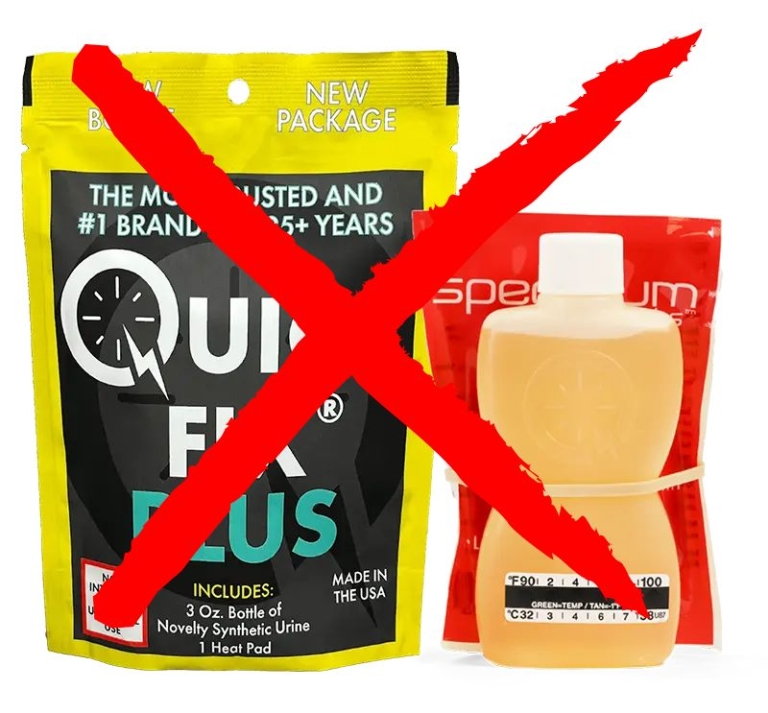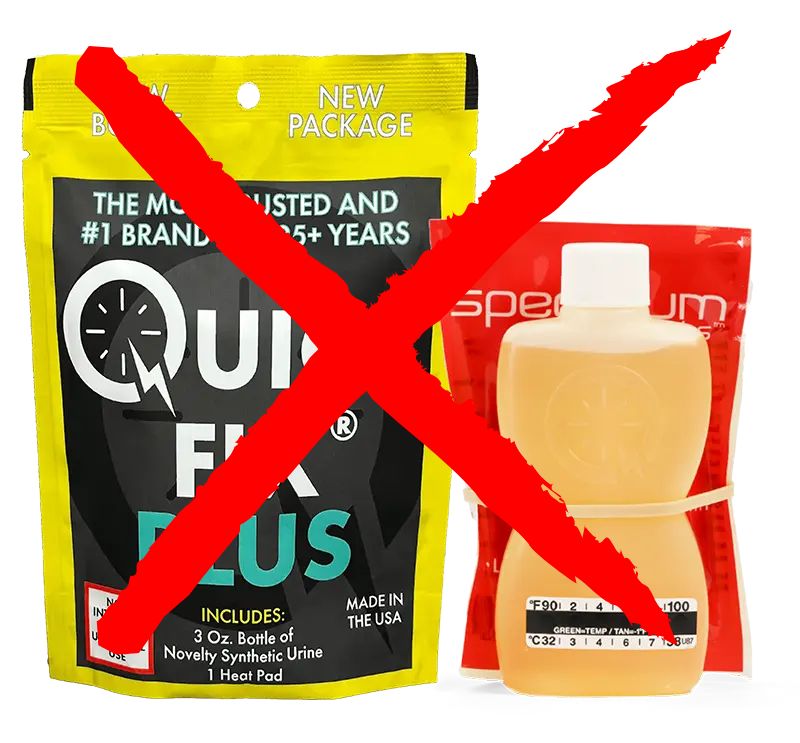
Why QuickFix Synthetic Urine Fails: The Truth Labs Don’t Want You to Ignore
 Why QuickFix Synthetic Urine Often Fails: A Full Breakdown of the Risks, Flaws & Real-World Problems
Why QuickFix Synthetic Urine Often Fails: A Full Breakdown of the Risks, Flaws & Real-World Problems
Over the last decade, synthetic urine brands like QuickFix have been heavily marketed as “guaranteed to work” solutions for people trying to get through workplace or insurance screenings. But the truth is very different: QuickFix fails more often now than it ever has before, and modern labs have become extremely sophisticated at detecting it.
This article breaks down exactly why QuickFix synthetic urine doesn’t work reliably—what has changed in modern testing, what labs look for, and why thousands of people report failures even when they follow the instructions perfectly.
Want a better option? Try Magic Detox Capsules risk free….
1. Drug Testing Labs Have Evolved—Fast
Drug testing is a billion-dollar industry, and labs invest heavily in newer tools to detect tampering. Ten years ago, synthetic urine was simpler to get away with. Today, major labs use:
-
Mass spectrometry detection panels
-
Advanced validity tests
-
Microbial activity checks
-
Chemical signature comparisons
-
Creatinine pattern recognition
-
Urea/uric acid ratios
QuickFix is still based on a simple chemical formula that hasn’t evolved nearly as fast as the detection methods used in modern labs. When the technology outgrows the product, the product stops working—and that’s exactly what has happened.
2. Labs Flag Synthetic Urine by its “Chemical Fingerprint”
Every synthetic urine brand leaves behind a unique chemical signature. Labs now maintain databases of these profiles.
QuickFix’s formula is well-known and extremely common. When tens of thousands of people use the same product, labs quickly learn the patterns:
-
identical pH levels
-
identical creatinine values
-
identical specific gravity
-
missing metabolites
-
unrealistic ion balance
In real human urine, these values vary naturally. When the lab sees the same exact numbers repeatedly, it raises a red flag immediately.
3. Temperature Failure is Extremely Common
Even if the chemical formula passes, the temperature is the #1 reason QuickFix fails.
Collection techs usually check:
-
Temperature within 90–100°F
-
Cup warming time
-
Steam or condensation
The issues:
-
QuickFix cools down very quickly
-
Hand warmers aren’t stable
-
Many people overheat it
-
Temperature strips are unreliable
Any temperature mismatch = automatic fail, even before the sample goes to the lab.
Want a better option? Try Magic Detox Capsules risk free….
4. Labs Now Test for Biological Markers QuickFix Doesn’t Have
Modern drug test panels look for signs of real human biology, such as:
-
Urobilinogen
-
Epithelial cells
-
Subtle proteins
-
Bacterial activity (even tiny amounts)
-
Natural metabolites
Synthetic urine—including QuickFix—does not have these, and when labs see an absence of expected markers, the sample instantly becomes “invalid.”
An invalid = you test again, often under observation.
5. QuickFix Batches Are Known to Be Repeatedly Flagged
One of the biggest issues is batch consistency.
QuickFix uses mass production. That means thousands of bottles have:
-
identical chemical profiles
-
identical ratios
-
identical specific gravity
Some labs literally mark certain QuickFix batch numbers in their internal risk system because they’ve seen them show up hundreds of times.
The more common a product is, the easier it is for labs to spot it.
6. QuickFix Fails at Labs With Any Advanced Validity Panel
QuickFix often fails when a lab performs:
• GC/MS validity testing
Synthetic formulas show up as “non-human urine.”
• Advanced adulteration tests
Including tests for:
-
synthetic preservatives
-
fake urea
-
chemical stabilizers
-
pH buffering agents
QuickFix contains these additives, and labs identify them immediately.
• Opiate metabolite pathway checks
Even if you’re not being tested for opiates, labs look for natural byproducts to confirm “human urine.”
QuickFix lacks them.
Want a better option? Try Magic Detox Capsules risk free….
7. Hundreds of Online Reports Confirm Failure
Across Reddit, drug-testing forums, job boards, and real customer feedback, there are huge numbers of consistent failure reports, especially from:
-
Quest Diagnostics
-
LabCorp
-
Concentra
-
eScreen
-
Regional hospital labs
Failures are often described as:
-
“invalid sample”
-
“adulterated”
-
“not consistent with human urine”
-
“failed temperature”
-
“specimen rejected”
This isn’t random—it’s because QuickFix’s formula no longer matches modern lab detection standards.
8. Observed Tests Make It Useless
Many workplaces now use:
-
Observed collections
-
Direct line-of-sight testing
-
Gender-matched observers
In these situations, synthetic urine becomes completely impossible and usually gets the test automatically flagged if attempted.
9. Employers Know About QuickFix Now
Because synthetic urine became so widespread, many employers added policies specifically stating:
-
Attempting to use synthetic urine = automatic failure
-
Tampering = grounds for termination
-
Suspicious samples = retest under direct observation
Even if the synthetic urine “worked” chemically, the real risk is these procedural steps that detect tampering before the lab even analyzes your sample.
10. Bottom Line: QuickFix Synthetic Urine Is No Longer Reliable
QuickFix simply has not kept up with:
-
better lab technology
-
updated validity testing
-
metabolite detection
-
chemical profiling
-
temperature monitoring
-
anti-tampering procedures
-
widespread employer awareness
What worked years ago is now outdated, easily detected, and extremely high-risk.
If anyone is relying on QuickFix in 2025+, the chances of failure are very, very high.



